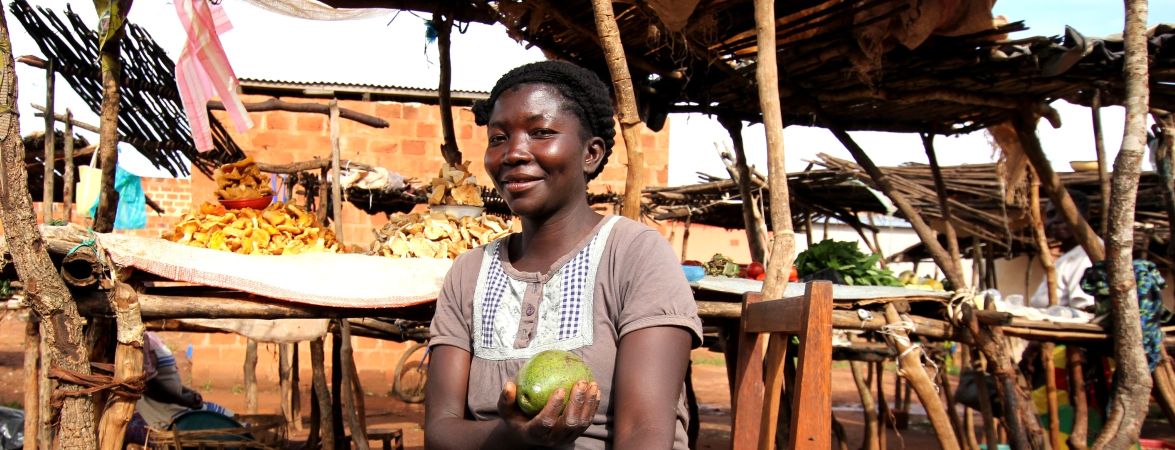
9 May 2019
Bank of Zambia advances women’s financial inclusion with milestone survey results
The Bank of Zambia (BoZ) marked a major step in advancing women’s financial inclusion after unveiling the results of a landmark survey that found women in Zambia inherently face more challenges in accessing formal financial products and services.
Speaking earlier this month at a dissemination workshop on the baseline survey on sex-disaggregated financial inclusion data in Lusaka, Deputy Governor Dr. Tukiya Kankasa-Mabula said the BoZ had used gender-specific data to identify key barriers facing women in accessing financial services. This, she said, made the central bank better able to understand the “magnitude of the financial inclusion gender gap” and “develop policies that specifically target women’s financial inclusion.”
“The main purpose of collecting sex-disaggregated data is to determine the levels of access, usage and quality of financial services; identify barriers to women financial inclusion; and assist with modifying the existing policies, strategies and regulatory measures,” she said during the opening remarks on May 2. Data was collected in late 2018 and covered 64 institutions regulated by BoZ.
Among the main findings was that most financial institutions, especially non-banks, had either no or limited differentiation in gender-focused products. In addition, despite having worse repayment records than women, borrowers were predominantly men. Out of 1,000 adults with a loan, 27 were male compared with 12 for women.
In spite of the statistics, Dr. Kankasa-Mabula remained upbeat about their implications, explaining that they would help “build the business case for developing products and services for women”.
“Financial institutions need to place greater emphasis on segment performance to support individual women and women entrepreneurs who should be assessed as a profitable business proposition, not as part of corporate social responsibility,” she said.
Divisions were also apparent within institutional structures themselves, with a sharp drop in the number of top-tier positions held by women in the financial sector compared with lower levels. According to the survey, only 28 percent of board-level positions and a third of senior management – mostly in marketing positions – went to women, compared with 45 percent in overall employment.
More positively, the number of digital wallets, or e-wallets, rose to 1.3 million active accounts in 2018 from 86,066 in 2014. Over the same period, the gap between men and women shrank to 80 percent male dominance from 89 percent.
Dr. Kankasa-Mabula also thanked the Alliance for Financial Inclusion (AFI) for its pivotal role in supporting the development and implementation of the data collection framework, a model that can be replicated within the AFI network and beyond. BoZ is one in a growing number of AFI network members that collects sex-disaggregated data, triggered in part by the 2017 launch of a toolkit that offers guidance to members on how to leverage sex-disaggregated data to accelerate women’s financial inclusion.
She added that among the next steps would be to devise age-specific products and services within the sex-differentiated products and services. Adding to this, during the closing remarks, BoZ’s Lazarus Kamanga said that the central bank hopes to produce a sex-disaggregated report on the financial sector by 2020.
BoZ is an active member of the AFI network and currently chairs its gender and women’s financial inclusion committee. Among its Maya Declaration commitments is a 50 percent reduction in the financial inclusion to 5 percent by 2022 from 10 percent in 2015. It aims to achieve this through initiatives in its National Financial Inclusion Strategy and 2016-2019 Strategic Plan.
The initial pilot grant to support BoZ in the development of a national sex-disaggregated data framework was provided by Data2X, a technical and advocacy platform dedicated to improving gender data. AFI’s Global Gender and Women’s Financial Inclusion workstream is financed by the Swedish International Development Cooperation Agency (Sida) with contribution from other partners.


© Alliance for Financial Inclusion 2009-2024